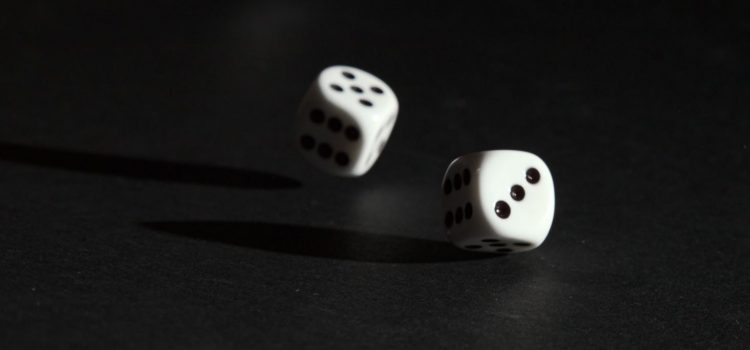

This article is an excerpt from the Shortform book guide to "Naked Statistics" by Charles Wheelan. Shortform has the world's best summaries and analyses of books you should be reading.
Like this article? Sign up for a free trial here .
Do you take into account probability when making decisions? Why do we make decisions that contradict probabilistic logic?
Understanding probability can be especially relevant to our daily lives because we make decisions based on our perception of probability all the time. However, our perception of likely outcomes is often mathematically irrational. This is because thinking in probabilities isn’t intuitive: Most people think in terms of binary categories of “yes,” “no,” and “maybe.”
Here’s why we make decisions that contradict probabilistic logic.
Understanding Probabilities
Probability allows us to manage uncertainty by measuring risks and putting possible outcomes in perspective. However, few people take into account probability when making decisions in real life. For example, the probability of getting in a car accident while driving to a beach is far higher than the probability of being attacked by a shark there, but we often—irrationally—fear the shark risk more.
| Thinking in Probabilities Isn’t Intuitive There are several reasons for our mathematically irrational perception of probability, including: Confirmation Bias: This is when we focus on what we expect and ignore the rest. Using our shark attack example above, we might justify our fear of swimming at the beach with a statement like, “Well, that one guy was bitten by a shark at Cape Cod last year!” ignoring the tens of thousands of swimmers who weren’t attacked. Anecdotal Logic: Improbable events are statistically bound to happen, and people notice and talk about them when they do. These stories of improbable occurrences stick in our minds and shape our perception of what is likely. For example, say you have a friend diagnosed with an exceedingly rare cancer. Even though your friend’s diagnosis is an anomaly, the rare form of cancer suddenly feels more prevalent. Short-Term Thinking: Humans are evolutionally hardwired to think in the short- and middle-term, which can make us feel like we’re witnessing statistically improbable events when we’re not (for example, witnessing a 100-year flood) and make us unable to process long-term data (for example, focusing on the cold snap over the last several days and ignoring climate change). Our brains’ tendency to misunderstand probability makes it a useful subject to study if we want to use statistics to make more informed decisions. |
Basic Probability
We can determine how mathematically likely an outcome is by setting up a fraction with the outcome we’re interested in on top and all possible outcomes on the bottom. For example, in a bag of 32 chess pieces, 16 will be pawns. The probability of pulling a pawn out of the bag will be 16/32, which reduces to 1/2, or 50%.
The probability of multiple independent events happening is the product of their probabilities. For example, in a bag of 32 chess pieces, the probability of picking a pawn out of the bag twice in a row (provided you put the first pawn back in the bag) is 16/32 x 16/32. When reduced to 1/2 x 1/2, the product is 1/4, or 25%. The probability of this happening three times in a row is 1/2 x 1/2 x 1/2, which equals 1/8 or 12.5%, and so on.
Sometimes, we’re interested in the likelihood of one of two mutually exclusive outcomes. In that case, option A or option B’s likelihood is the sum of their probabilities. For example, the likelihood of picking a pawn or a bishop out of the bag of chess pieces is 16/32 (probability of a pawn) + 4/32 (probability of a bishop). We can reduce this to 4/8 + 1/8, which is 5/8 or 62.5%.
Other times, we’re interested in the likelihood of one of two non-mutually exclusive outcomes. In that case, the probability of A or B happening is the sum of their individual probabilities minus the probability of both events happening. For example, the probability of picking a pawn or a piece (any piece) from the white set of chess pieces is 16/32 (chance of a pawn) + 16/32 (chance of a white piece) – 8/32 (the number of white pawns, which are already included in the calculation through the first fraction). When we reduce this to 2/4 + 2/4 – 1/4 it equals 3/4 or 75%.
| Thinking in Percents As we’ve outlined above, the probability of any event is a mathematical ratio; a percent. However, most people’s thinking is naturally binary; relegated to the categories of “yes,” “no,” and sometimes “maybe.” In their book Superforecasting, authors Philip Tetlock and Dan Gardner outline the characteristics of “superforecasters,” people who have a talent for accurately predicting future events. The authors argue that superforecasters are better at making predictions than the average person because they think in percentages. As Superforecasting explains, binary thought processes were likely helpful for our species’ evolution. If you’re staring into the face of a lion, you don’t want to spend time calculating the percent chance that the lion will attack. Luckily, we face fewer life-and-death decisions in modern life than our ancestors, and the ability to think about the future with more mathematical nuance is often helpful. Investment decisions, for instance, require more nuanced thinking than an immediate “yes” or “no.” Superforecasters naturally think of decisions as having a range of possibilities, each with their own likelihood, and are instinctively able to make astute decisions. |

———End of Preview———
Like what you just read? Read the rest of the world's best book summary and analysis of Charles Wheelan's "Naked Statistics" at Shortform .
Here's what you'll find in our full Naked Statistics summary :
- An explanation and breakdown of statistics into digestible terms
- How statistics can inform collective decision-making
- Why learning statistics is an exercise in self-empowerment






